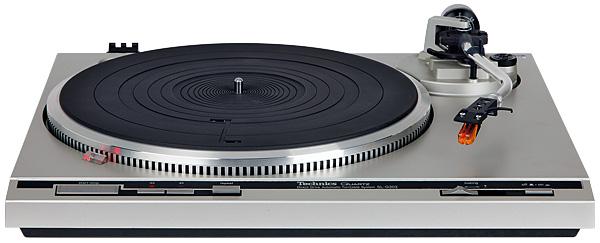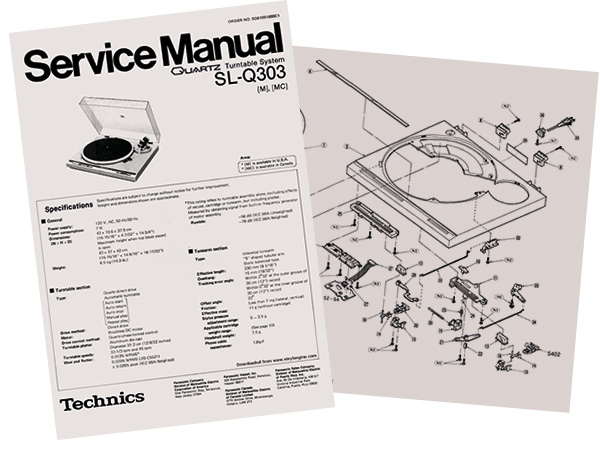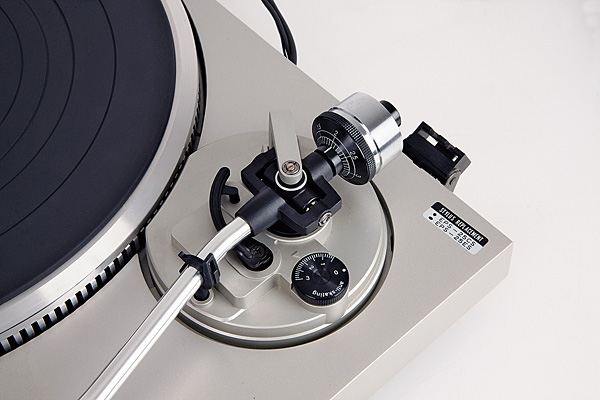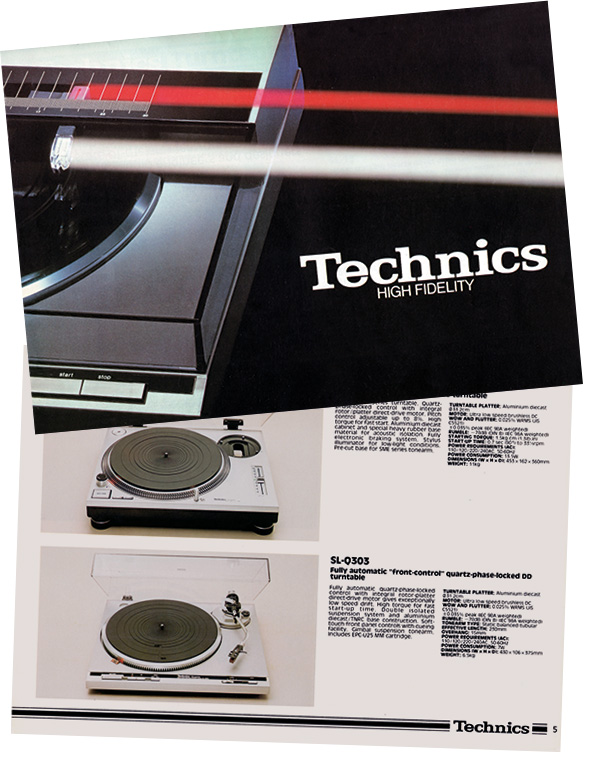Technics SL-Q303 turntable

 When launched, this turntable was just one of over a dozen Technics decks offered. Is it now the pick of the radial-tracking pack? Time to take it to the test bench...
When launched, this turntable was just one of over a dozen Technics decks offered. Is it now the pick of the radial-tracking pack? Time to take it to the test bench...
Think of direct-drive turntables and the chances are that one brand will spring to mind: Technics. What's more, its SL-1200 turntable will be the model most people think of first. This famous deck casts a long shadow over the others in the company's range and yet there were many to choose from. In fact, when the SL-Q303 seen here was launched in the UK in 1982 it was part of a 13-model lineup – a series that went from the professional-spec SP-10 MkII right down to moulded plastic belt-drive budget models such as the SL-B202.
Ignoring the SP-10 and SL-1200, the SL-Q303 was the top radial-tracking deck on offer that year. In addition, the company was enlarging its commitment to linear tracking with a choice of five such models. These ran from the premium SL-15 and SL-10 decks down to the basic SL-DL1. The SL-Q303 can thus be considered to be Technics' take on what a state-of-the-art 'consumer' radial turntable should be.

Premium Plinth
Although easily mistaken for cheap plastic from a distance, the SL-Q303's plinth was actually made from diecast aluminium. Beneath this, the working parts of the turntable were mounted on a rigid TNRC (Technics Non-Resonant Compound) sub-chassis hung from the plinth on steel coil springs. With the plinth itself mounted on absorbent rubber feet, this 'Double Isolated Suspension' set-up aimed to deliver freedom of positioning for the deck without the need for specialist audio furniture. Fully automatic operation was also part of the package, with little sensing fingers built into the platter to detect the presence and size of the record. The gimbal-mounted arm came with an S-shaped alloy tube and a removable magnesium headshell, the supplied cartridge being a simple EPC-U25.
As a Technics deck, the real interest, of course, was in the motor. The unit was direct drive and quartz-locked with phase control. A small LED stroboscope was fitted to demonstrate the motor's unerring stability but the two speeds were fixed and could not be adjusted by the user.
Although described as a high-torque design, the SL-Q303's motor could not match the might of the one fitted to the SL-1200, let alone the SP-10. While it retained Technics' signature integral rotor and platter arrangement, the stator part was flattened out to fit within the confines of the very slim plinth. What this layout gave away in torque, it more than regained when it came to rumble. The lower forces involved allowed decks in this series to return figures of –80dB (DIN-B wtd) when assessed by Hi-Fi Choice at the time [though see PM's Lab Report], a 'best in test' figure which eclipsed both the bigger Technics models (typically -78dB) and the Linn LP12 (-79dB).

Meanwhile, near perfect speed stability and accuracy completed a fine set of characteristics. Indeed, these outshone those of many more expensive and more audiophile-focused competitors.
Cause Of Confusion
The family of similar models of which the SL-Q303 was part was bewildering in its complexity. If you could do without fully automatic operation then you could choose the otherwise identical SL-Q202. Simplified versions of both variants, lacking both quartz lock and the aluminium plinth, were also available as the SL-D303 and the SL-D202. In the following year, straight-arm versions of all types were offered, complete with T4P cartridge mounts. These were the SL-Q30, SL-Q20, SL-D30 and SL-D20. All were fitted with EPC-P24 cartridges but were otherwise identical to the previously mentioned turntables. From a few paces away all of these turntables looked the same, which must have been the cause of much confusion when touring the dealers and comparing prices.
Even today they all tend to get lumped together, despite the considerable differences in facilities and quality which exist within the range. This was a typical situation at the time. In the UK in 1983 Technics offered 18 turntables, ten cassette decks, seven amps, five tuners and a dozen speakers – not to mention a host of other supplementary equipment. In other markets, such as Germany and Japan, the choice offered was wider still.
The turntable's feeling of solidity along with its exemplary finish mean it's an instantly attractive deck to handle and use – even if some may associate automatic operation with a 'non-serious' product. Rest assured, it is not.
Ticks 'N' Tocks
Our sample of the SL-Q303 was beautifully original right down to its factory-fitted cartridge, meaning there was very little to do in order to have the deck up and running. The arm balances in the usual way, although in standard form the design favours lightweight pick-ups such as the EPC-U25. Provision was made for an additional weight at the end of the arm tube but if this is missing, fitting a heavy cartridge will result in the main counterweight being set so far back that the lid won't close.

The start/stop key will be familiar to users of the larger Technics turntables, but here it triggers the automatic cueing routine as well as starting the motor. What then follows is a protracted series of gentle ticks and tocks from under the platter as the mechanism does its thing. The mechanical layout is surprisingly complex and involves multiple small mode cams instead of the usual single large one. Although slow, it all works with a deliberate and silky-smooth sense of precision.
Less convincing is the sliding action of the cueing control, which I considered awkward to use. A traditional lever located around the arm base would have been better in my view. Manual operation is possible, with the motor starting as soon as the arm is moved away from the rest. This is the way I chose to operate the deck, with hand-cueing a result of the tedious nature of the control.
Vibration Free
Once started, the strobe locks within a second or so and remains solid, the motor being silent and vibration free. The turntable comes fitted with a tethered cable terminated with two RCA connectors and a ground wire. These fitted straight into my Cambridge Audio 651P phono stage, which in turn was routed through the usual Cyrus 6A amplifier and Monitor Audio PL100 loudspeakers via Chord interconnects and cables.























































